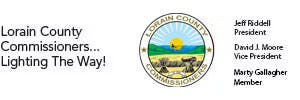The Sandstone Capital of the World sits quietly on the banks of Beaver Creek a few miles south of Lake Erie. When Jacob Shupe settled here in 1811, he kick-started the town’s economy by establishing a sawmill and built the first wood-frame house, which still stands today. In 1909, the town officially became known as Amherst for the second and final time. Foresthills Corners, Plato, Amherst, Amherstville and North Amherst all served to identify the area at one time or another before then.
The town’s economic climate has gone through nearly as many changes as its name. “It’s gone from agricultural to industrial to residential,” says Bob Pallante, president of the Amherst Historical Society.
Downtown’s five-points district, where North and South Main streets meet Cleveland, Milan and Park avenues continue to thrive with the help of grants acquired by the city and main street organizations, which encourage people to visit. Park Avenue boasts an abundance of small businesses, standing shoulder-to-shoulder along both sides of the street, such as the Ben Franklin store, Sharon’s Bridal and Ziggy’s Sports Bar & Grill. This narrow, one-way road is the place to really experience the town and its old-fashioned architecture — which has stayed true to its roots.
There are still active quarries in the area and several sandstone buildings near the town’s center, including the Amherst City Safety Services on South Main Street and EMH Amherst Hospital on Cleveland Street. They are a nod to the 1840s, when the material became the driving force that propelled the town’s economy into the 20th century and bestowed its nickname. Trains roared through the heart of town carrying the stone to Vermilion, where it was shipped to locations throughout the U.S. and Canada. Blue Amherst sandstone has made its way onto main streets in other cities and to construct city halls in New York, Philadelphia and Cleveland. — Robert Rozboril
Tim Kiedrowski, owner of Kiedrowski’s Simply Delicious Bakery in Amherst and recent recipient of Baking Buyer Magazine’s Best Bakery in America award, talks to us about sweet success.
Playing the game. When Kiedrowski learned his out-of-state competition was paying people to vote for its bakery, he rallied the troops. “I call it the Cleveland Browns effect,” he says, explaining Northeast Ohioans are loyal. He reached out to current and former customers and put a computer in his bakery — one vote was worth one free donut. Of 55,000 votes cast, Kiedrowski’s received 28,900.
Behind the Snoogle. The whole Kiedrowski family helped create the Snoogle. He and his wife combined cheese Danish and ladylocks. His sons named it with the Polish word that roughly translates to “something delicious.” More than 300 dozen were sold at last year’s International Festival in Lorain.
Inside a small business. Tim is visible everywhere at Kiedrowski’s. He’s in the back guiding production. He’s in the front greeting customers. During the holidays lines were so long people were standing outside waiting to get in, so he passed out Polish spirits. “It’s a Polish tradition,” he says.
Busy busy. Kiedrowski’s saw 685 customers over a 13-hour period on Good Friday followed by 703 on Saturday. “The line of people was out the door for 11 hours each day.”
Mom’s influence. His grandmother and mother owned a meat market/bakery in Lorain in the late ’30s/early ’40s. It closed during World War II, but his mother continued to bake.
Still the same guy. When Kiedrowski went to bed the night the award was announced, he admits, “I said to myself, ‘I’m the best baker in the country.” But when he woke up, he realized he still had to put in 14 hours the next day. He continues to do so with no complaints. — Myra Orenstein







